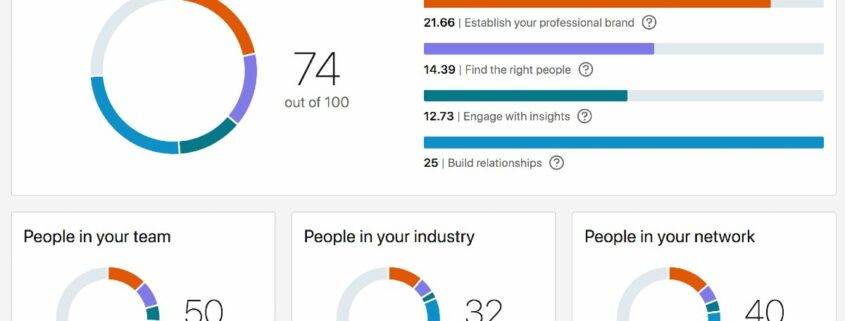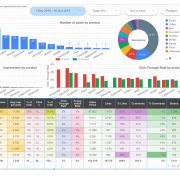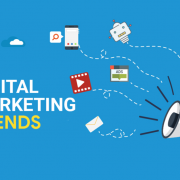Demystifying the LinkedIn Social Selling Index (SSI)
If you’re an avid LinkedIn user or just beginning to explore this professional networking platform, you may have encountered the term “LinkedIn Social Selling Index” or SSI.
What is it, and why should you care about it?
In this post, let’s dive into the world of LinkedIn and its SSI to help you understand its importance, how it can benefit you and, of course, how to calculate it.
LinkedIn was launched in 2003 as a professional networking platform designed to connect people with their colleagues, classmates, and industry peers.
Over the years, LinkedIn has evolved into a powerful tool for job seekers, recruiters, businesses, and professionals looking to expand their network and gain valuable insights into their industry.
Today, LinkedIn boasts over 800 million members worldwide. It offers features such as job listings, company pages, online courses like LinkedIn Learning (it used to be called Lynda), and various tools for sales and marketing professionals.
Who uses LinkedIn mainly, and why?
LinkedIn attracts a diverse range of users who can be broadly categorized into:
- Active readers: These users regularly visit LinkedIn to consume content their connections share, engage with posts through likes, comments, or shares, and stay updated on industry news.
- Creators: These individuals actively share content on LinkedIn – articles, posts, or updates – showcasing their expertise or sharing valuable insights with their network.
- Job seekers & recruiters: People looking for new job opportunities or recruiters searching for potential candidates make up a significant portion of LinkedIn users.
- Inactive users: Some people create a LinkedIn profile but rarely engage with the platform after that – they might occasionally log in to update their work experience or accept connection requests but don’t actively participate in networking activities.
What is the LinkedIn SSI, and how is it calculated?
The LinkedIn Social Selling Index (SSI) is a metric that measures your effectiveness as a social seller on the platform.
In simpler terms, it gauges how well you’re utilizing LinkedIn to build your professional brand, engage with your network, and ultimately generate business opportunities.
While the exact formula for calculating SSI remains undisclosed, LinkedIn has shared that it’s based on four key factors:
- Establishing your professional brand includes having a complete profile, sharing relevant content, and engaging with your audience.
- Finding the right people: Utilizing LinkedIn’s search and research tools to identify and connect with potential prospects or partners.
- Generating engagement via fresh and original insights: Sharing valuable content, commenting on others’ posts, and participating in relevant discussions.
- Building relationships: Expanding your network, nurturing connections, and fostering trust within your industry.
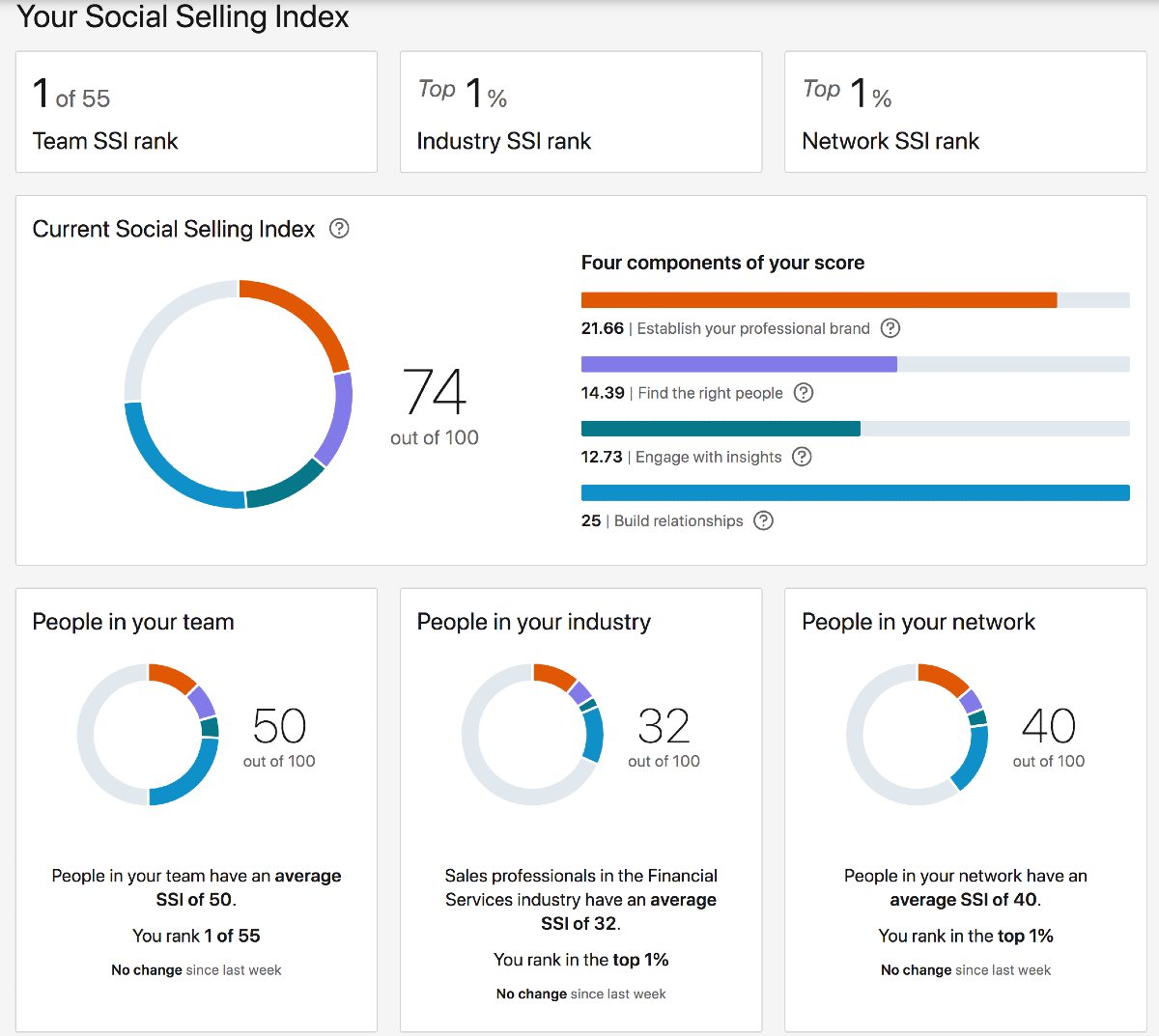
LinkedIn Social Selling Index (SSI) – Paolo Margari, Nov 2023
What are the benefits of having a higher SSI than others?
A higher SSI score can offer several advantages:
- Increased visibility: A higher SSI can boost your profile’s visibility in search results and help you get noticed by potential employers or clients.
- Enhanced credibility and authority: A high SSI score indicates that you’re actively engaging with your industry and staying updated on trends – making you a more credible resource for others. We can’t assume that a higher SSI also means a higher reputation. Still, it certainly helps to build trust since a more extensive network and a higher engagement than average can be considered social proof that validates user expertise.
- Better networking opportunities: A high SSI can attract more connection requests from other professionals in your field, opening up opportunities for collaboration or business partnerships.
Professionals who rely heavily on networking to generate business opportunities – such as salespeople, marketers, consultants, entrepreneurs, and recruiters – can significantly benefit from having a high SSI score.
By leveraging their LinkedIn presence effectively, they can build a solid professional brand, connect with potential clients or partners, and ultimately drive business growth.
What should you do to increase your SSI?
To improve your LinkedIn SSI score, follow these steps, also recommended by the platform itself:
- Complete your profile: Ensure that your profile is up-to-date, with a professional photo, compelling headline, and detailed work experience. You can check the completion percentage: ideally, it should be 100% (follow the LinkedIn guidelines to achieve it).
- Share valuable content: Regularly post articles, updates, or insights that showcase your expertise and add value to your network. Don’t just post links or share content without a comment. LinkedIn wants to generate conversations. Any occasion is good to start one. For example, you can turn a comment into a post, adding extra insights (because the character length of a comment is lower than what you can write in a post). The more your content generates engagement, the more reach will gain your post, and consequently, your SSI will increase. Any user interaction, including clicks to links, plays, shares, likes, comments, and scroll if it’s a PDF, helps. Recently, users have tended to post more documents because it’s an easy way to generate engagement when users scroll horizontally (for example, a PDF guide in 30 pages where content is split into small sentences to let users scroll until the end). Live sessions are also a great way to gain reach and engagement, but they aren’t trendy on LinkedIn, unlike other platforms like TikTok.
- Engage with others: Comment on posts, participate in discussions, and give skill endorsements or recommendations to people you’ve worked with.
- Expand your network: Strengthen your network by finding and establishing trust with decision-makers relevant to your industry or specialization.
You might be questioning: How to find my LinkedIn Social Selling Index?
You might be curious to find out immediately, so here’s the link to find your LinkedIn SSI (obviously, you have to log in on LinkedIn first).
If your score is low, no worries! It’s updated frequently (apparently daily), so follow the steps listed above and recheck the next few days to see the progress and find out where to optimize your presence.
Users who turn their profile into Creator mode might have more chances of getting more visibility, but they must be active on the platform. Some users are not creators and still reach very high scores.
If you have a limited network (just a few contacts, maybe not much active on LinkedIn), reaching a relevant percentile in that pool can be easy.
However, you should also compare your score against the industry average (which also includes users who aren’t part of your professional network).
The SSI is just a number based on factors that, like any index and ranking, represent a simplified, partial summary of what it aims to measure, often producing misleading conclusions. It’s essential to check the status, but, for sure, the actual, authentic value of a user, a worker, or a person can’t be summarised in a number based on a few clicks that sometimes are the only goal of some so-called social influencers. Luckily, quality is not just a number, so don’t come to fast conclusions based on your positive or negative score. No algorithm can determine the actual value of an individual unless we accept a biased point of view.
It’s time to transform storytelling into storyselling.
How does the LinkedIn algorithm works? Key findings to remember to optimise your presence and SSI (infographic, 2023)
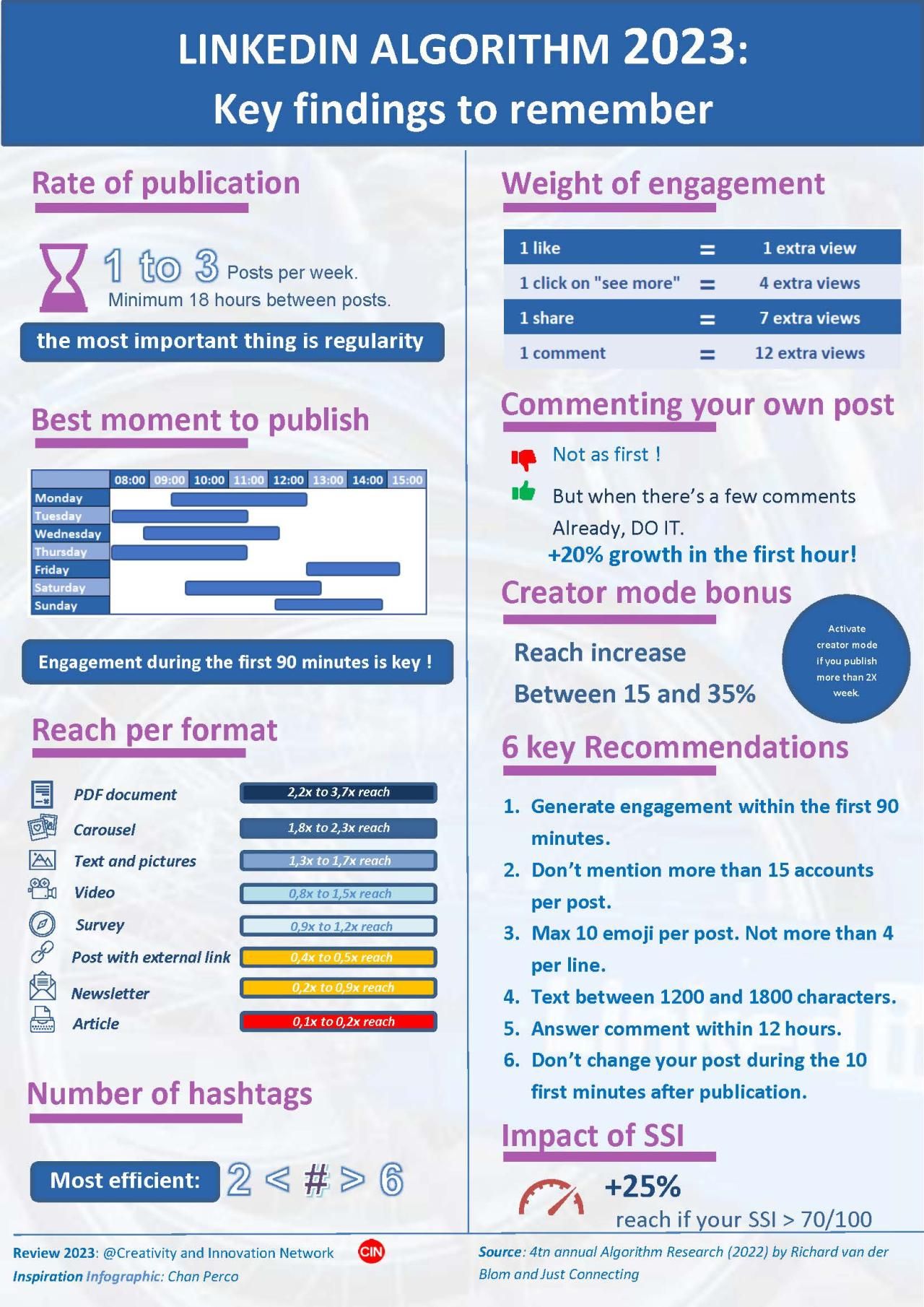
Did you find this article helpful?
- Share this post (also on LinkedIn, obviously, adding your comment to it, you can use the social sharing buttons below) and follow me!

